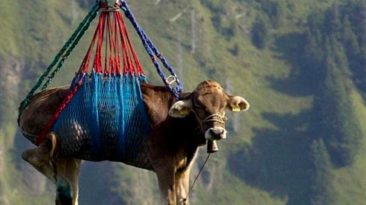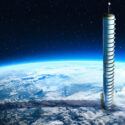You’ve seen politics and national borders change all the time, but have you ever witnessed a continent literally breaking apart?
Well, it’s possible, and it’s happening to Africa right now. In 2005, a 60 km long stretch of the continent cracked open over a period of just ten days, and it hasn’t stopped expanding since.
Eventually, the landmass will break right off, giving birth to a brand new ocean. How soon will this happen? And what does it mean for the people of Africa?
The face of our planet is continually changing, thanks to the shifting of tectonic plates, but it’s rarely this noticeable. In the years since 2005, more cracks in the Earth have opened up in several countries throughout the African continent, sparking fear among their populations.
But as scary as the fractures may seem, experts say they could teach us a lot about how our world was formed. Have you ever heard of the East African Rift? Neither had most people in Ethiopia until the ground started cracking beneath their feet.
The East African Rift is an active continental rift zone in East Africa, and judging by the blank look on your face, it may require more of an explanation before we go any further. Okay, so the rigid outer layer of the Earth is called the lithosphere, and it’s broken up into many tectonic plates.
Tectonic plates are basically large slabs of solid rock that move relative to each other at varying speeds. When these plates move apart from each other, they cause fractures to be formed at their boundaries.
The land remaining in between the two plates starts to sink, and forms what’s known as a rift valley. This can lead to new boundaries being created between plates.
In the case of the East African Rift, the African tectonic plate is breaking up into two smaller ones: the Somali and Nubian plates. So what happens when these plates completely break off from each other?
Well, for one thing, we won’t be around to see it. Despite the rapid appearance of the surface cracks, geologists say the continent won’t fully break apart for about 10 million years.
They’re currently spreading apart at a rate of 6-7 mm a year, so don’t hold your breath. As the plates continue to pull away from each other, the rift valley will sink deeper and deeper, and water from the Red Sea will flood in to create a new ocean.
Africa will become a lot smaller, as parts of southern Ethiopia and Somalia will drift off to form a new island. What does this mean for all of us in the meantime?
Well, African residents who live along the rift can expect more disturbances: cracks through their highways and cities, and the emergence of vast canyons where there weren’t any before.
But it’s not all bad news; in fact, most geologists are pretty excited about studying the whole process. They believe it can lead to some pretty “groundbreaking” information about how our Earth’s surface is shaped, and how earthquakes and volcanic eruptions work.
Subscribe to What-If on Youtube or follow the show on Facebook Watch.
Sources
- “Africa Is Splitting In Two – Here Is Why”. 2018. The Conversation. Accessed March 10 2019.
- “Splitting Africa: What Happens When A Continent Breaks Apart?”. 2012. The Conversation. Accessed March 10 2019.
- “New Ocean Developing In Africa”. McGrath, Matt, 2010. BBC News. Accessed March 10 2019.
- “Africa Is Being Ripped Apart By A Gigantic New Ocean Forming Right Now”. 2017. INSH. Accessed March 10 2019.
- “Africa Is Being Split In Two – But What Does That Mean?”. 2019. Iflscience. Accessed March 10 2019.



























